Destination: Northern Territory
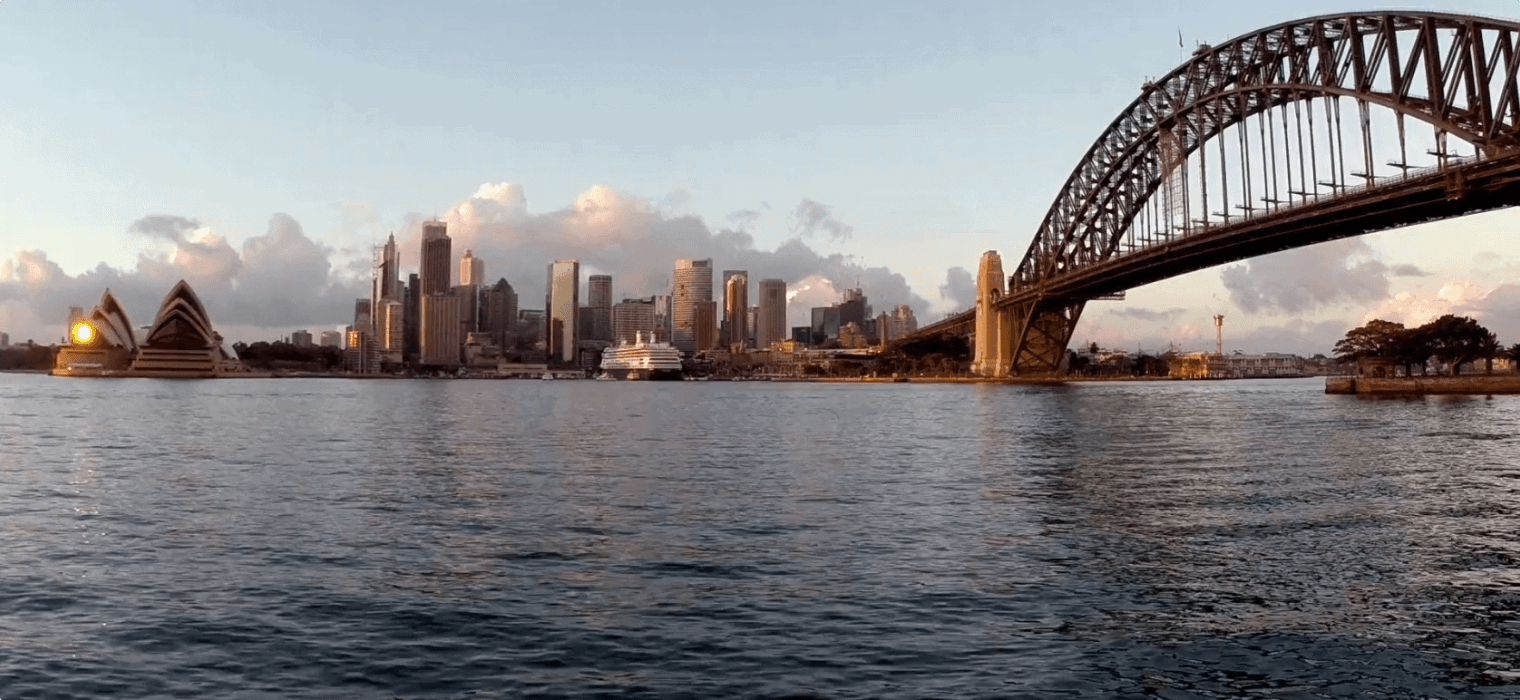
Small group tour Northern Territory
Odyssey’s authentic and safe small group escorted tours to the Northern Territory are limited in group size to 15 senior travellers, couples or solo plus tour leader. This tour company offers a proven collection of inspired touring programs balanced to inspire the traveller to learn about deep Aboriginal culture, the colonial history and the landscapes that inspire for the smaller group on a Northern Territory tour. There is enormous variety of spectacular scenery, history, wildlife and cultural activity within the Territory. For small group touring there is much for the senior traveller on a small group experience for an inspiring journey into the desert.
Northern Territory Tours
Crafted Tours for Mature World Travellers
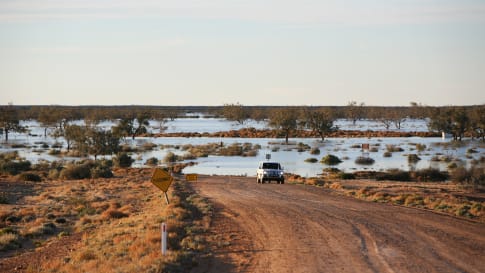
65 days
MarLong tour of Australia for a small group
Visiting New South Wales, Northern Territory
Small group tour for senior couples and solo travellers touring Australia. Travelling through the outback and visiting many of the famous sights as well as off the beaten track locations. Learn about the history of the people who explored the deserts, from indigenous communities to Europeans, as well as Burke and Wills, visit White Cliffs, Marree and far north Kakadu and the Kimberley.
From A$48,995 AUD
View TourLand locked on three sides, Australia ‘s Northern Territory, the least populated of the Australian states, is a curiosity with much to interest the small group traveller joining one of our Northern Territory small group tours. The territory has a size of some 1,349,129 square kilometres but a population of only c. 255,000 people, or about 1% of the Australian population. The Aboriginal population represents about 30% of the total population, many living in remote regions, while most of the Europeans live in Darwin, the capital city. The small group experience offered is built on unique cultural experiences within a safe small group travel bubble.
The south has vast stretches of desert, while the north has a tropical climate and patches of rainforest alternate with wetlands and regions of savanna woodland. In the north there are two very distinct seasons, the hot wet and the hot dry. Although people often avoid the humid summer wet season, it can provide a marvellous adventure for those prepared to venture into the Kakadu National Park to experience the full impact that the wet has on the landscape. For some, this is the best time of the year to tour Kakadu. In the outback centre of the territory, temperatures are much more variable than in the tropical north. In central Australia temperatures can soar to 40 degrees on a summer’s day but plunge to below zero of a winter night. Travellers need to prepared for either eventuality.
Infamous red roads run within the state, with the fully sealed 2,834 kilometre Stuart Highway running from Port Augusta in South Australia to Darwin, forming the backbone. Much of this road runs adjacent to the Ghan Railway, which now links Adelaide and Darwin, and runs right through central Australia. The Ghan, named for the Afghan traders who once serviced much of the Northern territory, and the Stuart Highway, follow the path mapped out by the colonial explorer John Stuart. A tour into central Australia, on either the Ghan or the Stuart Highway, takes you into the heart of the Australian outback. An Odyssey tour ensures that you can do the journey in safety with experienced tour guides.
The Northern Territory has much to offer the senior traveller. A traveller might begin in the capital Darwin, where an escorted city tour allows you to explore the colonial history of the region through the buildings which managed to escape the infamous Cyclone Tracy of December 1974. There is a superb museum and art gallery which highlights the Northern Territory Aboriginal art collection with carvings and paintings from the Tiwi Islands and Arnhem Land. The museum also covers Cyclone Tracy and its devastating impact in some depth. While in Darwin you can also take a day tour to the beach resort of Mandorah or venture further afield and visit the the Tiwi Islands, only accessible on a tour, with an Aboriginal guide. The islanders produce highly acclaimed Aboriginal Art which is unique to the region.
Away from Darwin, most visitors to the Northern Territory take a trip to Kakadu National Park and Catherine Gorge . Further south they visit Uluru (formerly Ayers Rock ) and Kata Tjuta (formerly known as the Olgas). Odyssey offers fully escorted small group tours for the senior traveller to all of these places. We offer tours to Kakadu, a UNESCO World Heritage Site, in both the wet and the dry seasons. Here the traveller on an Odyssey guided tour can see a large collection of Aboriginal Art in its original position and explore the crocodile infested waters of the National Park from the safety of a tour boat. Our thirteen day tour from Alice Springs to Uluru – Kata Tjuta (World Heritage National Park ), takes in the spectacular Kings Canyon and the extraordinary West Macdonnell Range, as well as the world famous monolithic Uluru , sacred to the Aboriginal people and loved by tourists. A small group tour of the Northern territory with Odyssey takes you on an journey full of adventure, scenic wonder and memorable cultural experiences.
Odyssey’s collection of Australia tour packages with a tour manager enable you to explore not just the Northern Territory but each state and territory from Odyssey’s escorted tours Australia 2021 portfolio. The senior traveller can take a city based tour or an Australia holidays package into the Western Australia outback to the Kimberley or South Australia ‘s Flinders range. Alternatively you can just spend a week on holiday in Hobart learning about a range of subjects on Odyssey’s Summer Schools tour package. This collection of some 70 scheduled small group holiday departures provides plenty of choice for an Australian holiday. You can make your booking direct for your Australia escorted tour with us or via your travel agent or travel consultant .
Tours in Australia
Small group tours throughout Australia

65 days
MarLong tour of Australia for a small group
Visiting New South Wales, Northern Territory
Small group tour for senior couples and solo travellers touring Australia. Travelling through the outback and visiting many of the famous sights as well as off the beaten track locations. Learn about the history of the people who explored the deserts, from indigenous communities to Europeans, as well as Burke and Wills, visit White Cliffs, Marree and far north Kakadu and the Kimberley.
From A$48,995 AUD
View TourArticles

Aboriginal history and culture of Kakadu National Park, Northern Territory
For those seek to learn as they travel then the history of the Aboriginal journey and timelines that unfold as a discovery in Australia seek to fascinate the mature and senior traveller on a small group package tour for couples and singles. From Darwin, this tour also visits Arnhem land as well as Kakadu, during the dry season.

Ancient Aboriginal trade routes of Australia
Ancient Aboriginal trade routes of Australia Trade was a central part of life for Aboriginal people prior to the British settlement of Australia. Trading routes criss-crossed the nation, dispersing goods, information, technologies and culture thousands…
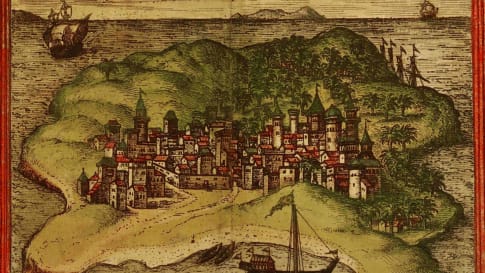
Archaeological mysteries of Australia: How did a 12th century African coin reach Arnhem Land?
Consider the impact of Portuguese, Spanish and Chinese followed by the Dutch trading in the Spice islands to the North of Australia from the 11th century. The probability of African coins reaching a beach become real. Learn more on a small group package tour to Kakadu and Arnhem land or the Kimberley where shipwrecks have been found to consider the impact on Aboriginal history and rock art. Tours for seniors couples and singles.
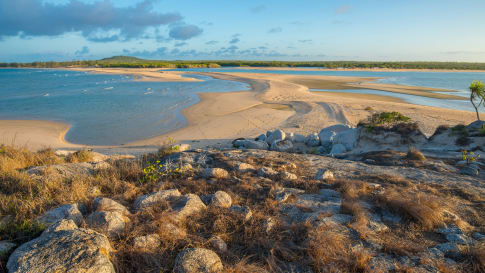
Arnhem Land, Northern Territory
To enter Arnhem land a permit is required for visitors. Explore and learn about the Aboriginal community in Arnhem land as part of a small group package tour that includes Darwin and the Kakadu. These are small group tours of upto 12 like minded mature and senior travellers, couples or solo travellers interested in exploring as they tour.
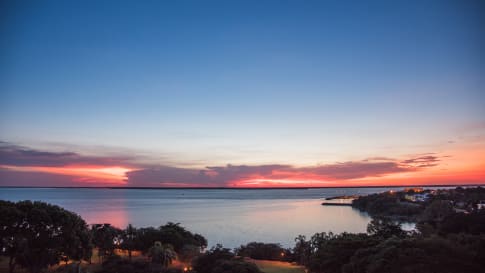
Darwin, Northern Territory
Discover Australia's Northern city whilst on a small group package tour to the Northern Territory with likeminded mature and senior travellers couples or singles. Darwin is the base for a tour of Kakadu and Arnhem land.

Madjedbebe Archaeological Site, Northern Territory
Madjedbebe Archaeological Site, Northern Territory Near the border of western Arnhem Land and Kakadu National Park in Australia’s ‘top end’, Madjedbebe rock shelter (formerly known as Malakunanja II) is the oldest archaeological site in Australia,…

Natural landscapes of Kakadu National Park, Northern Territory
Article about a unique RAMSAR landscape and UNESCO world heritage site explored and part of a small group tour for mature and senior travellers couples and singles based in Darwin. Landscape, wildlife, and aboriginal history and settlement plus African mystery are part of this and other articles on Kakadu.
History
The Northern Territory has a very long history of human habitation. Recent archaeological evidence suggests that Aboriginal Australians have occupied the land for as long as 125,000 years, although Aboriginal history asserts that “we have been here since time began”. Archaeological sites indicate, that from their first landings on the north coast of the continent, there was a very rapid movement of people throughout Australia 48,000-50,000 years ago. One of the most important early sites is in the Northern Territory at Madjedbebe in Arnhem Land. Fossil evidence from this rock shelter has been claimed to date back as far as 65,000 years, though this date has been disputed by some. At the time of European settlement there were an estimated Aboriginal 35,000 people living in 126 tribal groups within the territory. On an Odyssey tour we seek out many of the ancient sites, allowing you to come to a greater understanding of Aboriginal culture. Spectacular rock art sites can be found throughout Kakadu and Arnhem Land, and at Ubirr, a talk from a local park ranger allows us to learn about the ancient rock art and its significance. The East and West Macdonnell Range is also home to some fascinating art, with the oldest petroglyphs believed to be some 10,000 years old.
Contact between Australia and Asia pre-dates European settlement. From at least 1700 until 1907, hundreds of fishermen sailed each year from Makassar on the island of Sulawesi (now Indonesia) to the Arnhem Land coast. The Makasar traded with Aboriginal people for trepang (sea cucumber) which they boiled down, dried on their boats and then traded with China where is was (and still is) used for food and medicine. The Makasar did not settle in Arnhem Land but they did have an influence on the indigenous people. The Yolnu Aboriginal people were introduced to calico, tobacco and smoking pipes but, more importantly, to metal. metal blades, knives and axes made everyday practices easier for the Yolnu, from cutting food to making large dugout canoes and complex wooden structures. In 1803, while circumnavigating Australia , Matthew Flinders encountered traders from Macassar and wrote of his encounter in his journal.
Early European attempts to settle the north of the country came from the British fearing that the French and the Dutch might try to gain a foothold on the continent. British forts were established at places like Melville island and Fort Wellington on the Cobourg Peninsula. These, however, were soon abandoned. White settlement was slow but just as troubled as in the rest of the continent. In 1863 the Northern Territory came under the control of South Australia and white settlers began to set up vast cattle runs in the outback , exporting to the Asian market. By the early 20th century most Aboriginal people had been dispossessed from their traditional lands and confined to reserves or missions. (This has changed a little over recent years and today Aboriginal people own about half of the land in the Northern Territory .) A telegraph cable linking Darwin, then known as Palmerston, and the overseas cable was completed in 1872. The Northern territory was becoming a little less isolated. A gold rush at Pine Creek in 1874 also attracted settlers. The population, however, remained, and still remains, small. In 1911 the Northern Territory was taken over by the Commonwealth Government for administration and then, finally, in 1978, it was granted self government.
The Northern Territory has had a turbulent history. Conflict did not cease with the initial dispossession of the Aboriginal people. Even as recently as 1966 Aboriginal stockmen on the big cattle stations were still being seriously underpaid. On the 23rd of August 1966, Vincent Lingiari led 200 courageous indigenous stockmen and their families off Wave Hill Cattle Station protesting against the work and pay conditions. Gradually, since then, some improvements have been made though it took 9 years of protest before Lingiari and his people were ‘handed back’ title to their Gurindgi lands. During World war II the northern coast of the continent came under attack from the Imperial Japanese forces. In the first and deadliest set of attacks, 242 aircraft hit Darwin on the morning of 19 February 1942, killing at least 235 people, causing enormous damage and making hundreds of people homeless. The history of the Northern Territory during WWII is a fascinating one, censored during the war and only recently being fully revealed. A tour to the Darwin Military Museum and the Darwin Defence Experience will allow the traveller to learn more about this dangerous time in Australia‘s history.
A small group tour of Australia is a journey between cities with up to 250 years of settlement history and an outback, which has some of the oldest known geologic material on earth. But importantly, it has one of the longest and truly fascinating known periods of human settlement. Indigenous Australians settled the continent possibly via a land bridge or by small boat voyages from Southeast Asia at least 60,000 years before the first Europeans from Portugal and Spain began exploration in the 17th century. For senior and mature travellers, a small group tour of Australia is a unique experience.
Australia is a country the size of America, with one of the longest coastlines in the World. Some 80% of the population lives on Australia ‘s east coast , separated from the outback by the low mountains of the great dividing range. Australia ‘s geographic diversity, in landforms, flora, and wildlife, is part of its charm, providing the back drop for a small group adventure in the winter period . Whilst the Great Barrier reef , Kangaroos and Koalas are well known, the biodiversity in the native Australian wildlife on any escorted tour complete with a local guide into the outback is amazing. The enormous biodiversity present is, however, often missed until a good tour guide or travel expert shares their knowledge with you as you travel often on a epic journey across one of the world’s most beautiful and fascinating countries. Australia, across the outback, and in its national parks, such as Purnululu National Park , the Blue Mountains , Kuku Yalanji, the Great Barrier reef and Kata Tjuta, accounts for some 10% of the Worlds biodiversity. On any tour of Australia travellers will often see wildlife ready to be photographed.
Reaching your Destinations
The Northern Territory of Australia is often referred to as “The Top End”, and those wishing to visit will soon realise that Darwin is closer to Singapore than it is to Sydney, Melbourne or Canberra, all many thousands of kilometres to the south. A traveller can easily fly into Alice Springs or Darwin, or even take the famous three day Ghan railway journey through South Australia from Adelaide. It is, of course, possible to drive up through the outback from the southern states, but this is not a drive to be undertaken light-heartedly. The Northern Territory is sparsely populated with somewhere around 255,000 people living across the outback or in Darwin, this is around just 1% of the total Australian population.
A guided small group tour of Northern Territory with Odyssey can offer the senior traveller an experience rich in the territory’s natural, cultural and gastronomic heritage, safe in the knowledge that you are on an escorted tour where all precautions have been taken. Travellers to the Northern Territory would usually begin in tropical Darwin, the territory’s capital. Darwin has developed into a vibrant city with about 60% of the Territory’s population living within the greater Darwin region. Here the senior traveller on a small group tour of Northern Territory can sample the wide variety of ethnic foods available in this most multi-cultural of cities. Naturally there is also an abundance of fresh sea food, or the more traditional outback steak. Darwin also provides the senior traveller, whether solo or in company, with an introduction to the history and culture of this part of Australia, through its museums and guided tours.
Once the traveller ventures into the outback, a whole new adventure awaits. You will be able to experience indigenous culture on a Kakadu tour in the Kakadu National Park and in Aboriginal controlled Arnhem Land. Aboriginal culture can also be explored in the West Macdonnell Range, at Uluru, at King’s canyon and in the Kata Tjuta National Park. Dreamtime stories as well as rock art and archaeological evidence will give the traveller a much better understanding of this ancient civilisation, a civilisation which has existed continuously on the continent for at least 50,000 years. As well as providing an introduction to Aboriginal culture, central Australia allows the traveller to experience some of the world’s most amazing and beautiful scenery. Uluru is possibly the world’s most famous rock, but the Devil’s Marbles (Karlu Karlu Conservation Reserve) and the soaring rock domes of Kata Tjuta are also amazing natural formations. A cruise down the Catherine River through the gorge is another adventure that should not be missed. Palm Valley, within the Finke Gorge National Park, is the only place in Central Australia where red cabbage palms survive. (The nearest specimens are 850 kilometres away in Queensland.) The average rainfall of the area is only 200mm but small pockets of semi-permanent spring-fed pools allow the unique flora in this region to survive.
FAQs
What is the best way to tour the Northern Territory?
.
What are the best places to visit in the NT?
.
What is the best way to get to the Northern Territory?
Darwin is the main gateway for you to fly into the NT, or you may choose to arrive by the famous Ghan train, which travels from Adelaide to Darwin.
When is the best time to visit the Northern Territory?
.
Touring the Northern Territory
The need to know
Getting around
Odyssey travels by coach and occasionally uses local transport, including trains and ferries. Specifics for your Northern Territory trip are always outlined in your tour itinerary. Bus services are widely available, with long-distance buses and shuttle buses providing services across the country. The train services are somewhat more limited in terms of transportation coverage, though remain a comfortable and very scenic way of getting around Australia and to the NT.
Accommodation
Odyssey stays in centrally located 3-4 star hotels, with easy access to public transport and local amenities so you in your down time you can enjoy the city like the locals.
Tour guides
Odyssey always engages local guides with regional knowledge to ensure an authentic experience during which you can learn as much as possible about the history and culture of places you visit.
Geography, Environment, & Weather
.
Festival & Events
.
Reading list
We of the Never Never, by Jeannie Gunn.
I, the Aboriginal, by Douglas Lockwood.
Eating & Drinking
.
Health & Safety
Generally speaking, Northern territory is safe to travel in, though always exercise common sense while travelling.
Electrical Supply
Whenever you travel overseas, it’s always wise to take an appropriate travel adaptor. The electricity supply in Australia runs at 230V and 50Hz. Australia uses the Type I electric plug, so make sure you have the right travel adaptor with you.
Highlights
The best of the Northern Territory

Wetlands in Kakadu N.P.
.

Rock art on the Arnhem Land escarpment

Darwin
.
Responsible travel tips for Australia
- Before departing, make sure you have a number of AU dollars in a range of denominations. You don’t want to be carrying around enormous amounts of cash, but take enough to make it easy to pay in locations that might not accept credit card. It will also help you avoid card transaction fees, and it makes tipping a breeze.
- Carry a card in your wallet or purse from your local hotel, to assist you with the return journey if you do become lost.
- Always ensure that you are covered by travel insurance. If you need advice on this feel free to contact Odyssey and we’ll be able to help.
- Before departing, make sure you have a number of AUD in a range of denominations. You don’t want to be carrying around enormous amounts of cash, but take enough to make it easy to pay in locations that might not accept credit card. It will also help you avoid card transaction fees, and it makes tipping a breeze.
- When travelling independently, make sure you check the opening hours of shops and museums so that you don’t miss out! Also be certain to check whether your trip coincides with any public holidays, so you can plan accordingly.
- Before departing on your trip, contact your bank to inform them that you may be making purchases overseas. Otherwise, they may flag any activity on your account as suspicious. Also, check which ATMs and banks are compatible with your cards, to ensure you can withdraw cash with minimal fees.
